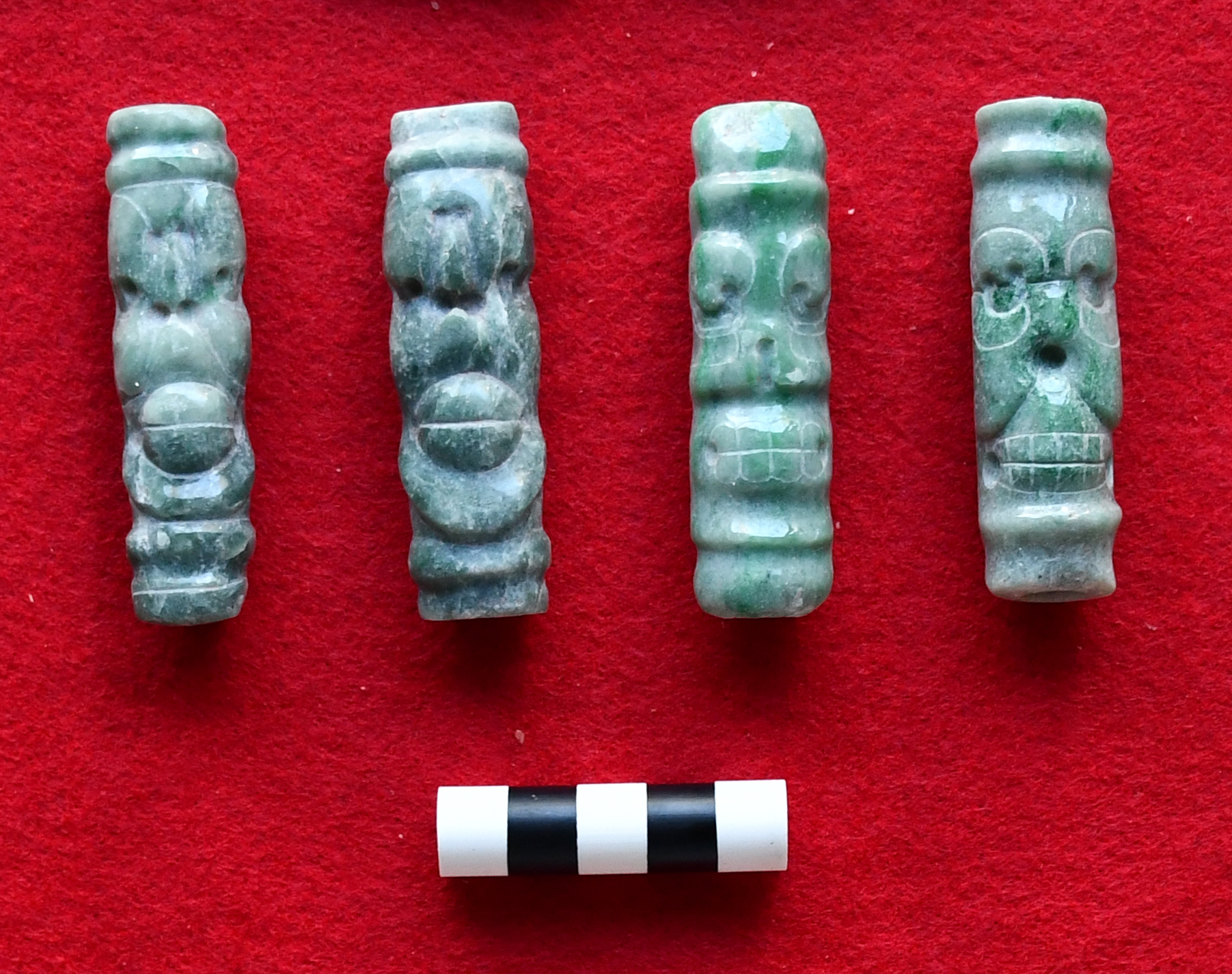After more than 40 years of exploration and excavations at the ancient Maya city of Caracol, researchers have finally unearthed a tomb belonging to one of its rulers. Even more significantly, the burial happens to contain the remains of Te K’ab Chaak, the very first king of this pre-Hispanic powerhouse and founder of its royal dynasty.
“We found the first person in the dynasty so that, in itself, in terms of the history of Caracol is huge,” said Diane Z. Chase from the University of Houston, who has been leading excavations at the site in Belize along with her husband Arlen since 1985. “We’ve found numerous tombs with really impressive artifacts inside that were clearly members of the royal family, but this is the first one where it matches with hieroglyphic records to be a ruler and beyond that, the first dynastic ruler,” she explained.
Jadeite beads depicting spider monkeys were found in Te K’ab Chaak’s tomb.
Image credit: University of Houston
In its heyday around 650 CE, Caracol housed a population of roughly 100,000 people and was the dominant polity in the Maya realm. Almost a century earlier, in 562 CE, warriors from Caracol had defeated the mighty forces of Tikal in Guatemala, confirming the city’s regional supremacy.
Yet none of this would have been possible without Te K’ab Chaak, who ascended the throne in 331 CE and got the ball rolling. The Chases found his tomb at the base of a royal family shrine, noting that he appears to have died at an advanced age and without any teeth.
Alongside the body, the archaeologists found a wealth of grave goods, including a jadeite death mask, three sets of jadeite earflares, a jadeite pendant, two pacific thorny oyster shells, and two turtle shells. Dated to around 350 CE, the tomb is one of three contemporaneous burials that provide new insights into the geopolitical dynamics of ancient Mesoamerica.
The fragmented jadeite death mask found in Te K’ab Chaak’s tomb.
Image credit: University of Houston
Until now, it was thought that the great city of Teotihuacan in what is now Mexico City extended its sphere of influence to the Maya lowlands in 378 CE – an event known as La Entrada. Yet the three burials all show signs of extensive contact between Caracol and Teotihuacan a generation before this date.
For instance, one of the tombs contains the remains of three individuals alongside 15 obsidian blades from Pachuca in Mexico, as well as atlatl points. An ancient weapon associated with the warriors of Teotihuacan and, later, the Aztecs, atlatls were not used by Maya fighters and must therefore have been brought to Caracol from the north.
“The connections between the two regions were undertaken by the highest levels of society, suggesting that initial kings at various Maya cities – such as Te K’ab Chaak at Caracol – were engaged in formal diplomatic relationships with Teotihuacan,” explained Arlen Chase in a statement.
This implies that the founding king of Caracol may have established ties with Teotihuacan several years before La Entrada, which is remarkable for two reasons: first, it re-writes the accepted chronology of the region, and second, it demonstrates the incredible distances that officials from both Caracol and Teotihuacan must have travelled some 1,700 years ago.
Separated by 1,200 kilometers (745 miles), the two ancient cities weren’t exactly neighbours, and it would have taken about 153 days to walk from one to the other.
Researchers now hope to conduct genetic and stable isotope analyses on Te K’ab Chaak’s remains in order to learn more about him. In the meantime, Diane and Arlen Chase will be presenting more details about this discovery at a conference hosted by the Maya Working Group at the Santa Fe Institute next month.
Source Link: Tomb Of First King Of Ancient Maya City Discovered In Belize
